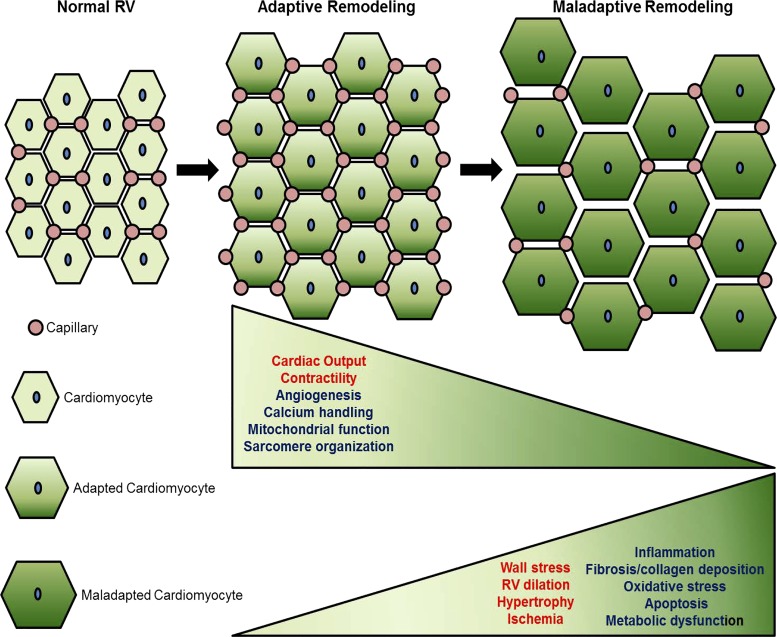Fig. 1.
Right ventricle (RV) vasculature during transition from adaptive to maladaptive RV remodeling. Current evidence associates RV adaptive remodeling (characterized by maintained RV contractile function) with increased proangiogenic signaling and capillary density, whereas the transition to maladaptive remodeling (characterized by decreased RV contractile function) is marked by RV endothelial cell dysfunction and capillary rarefaction. In addition to capillary rarefaction, the transition from adaptive to maladaptive RV remodeling is characterized by decreased calcium handling, mitochondrial function, and sarcomere organization and increased hypertrophy, ischemia, inflammation, fibrosis, oxidative stress, apoptosis, and metabolic dysfunction. The exact contribution of each of these molecular processes is currently unknown and remains to be determined. Functionally, this process is characterized by worsening cardiac output and increasing RV dilation with increasing wall stress. Functional/structural changes shown in red font; biochemical/molecular changes shown in blue font.

